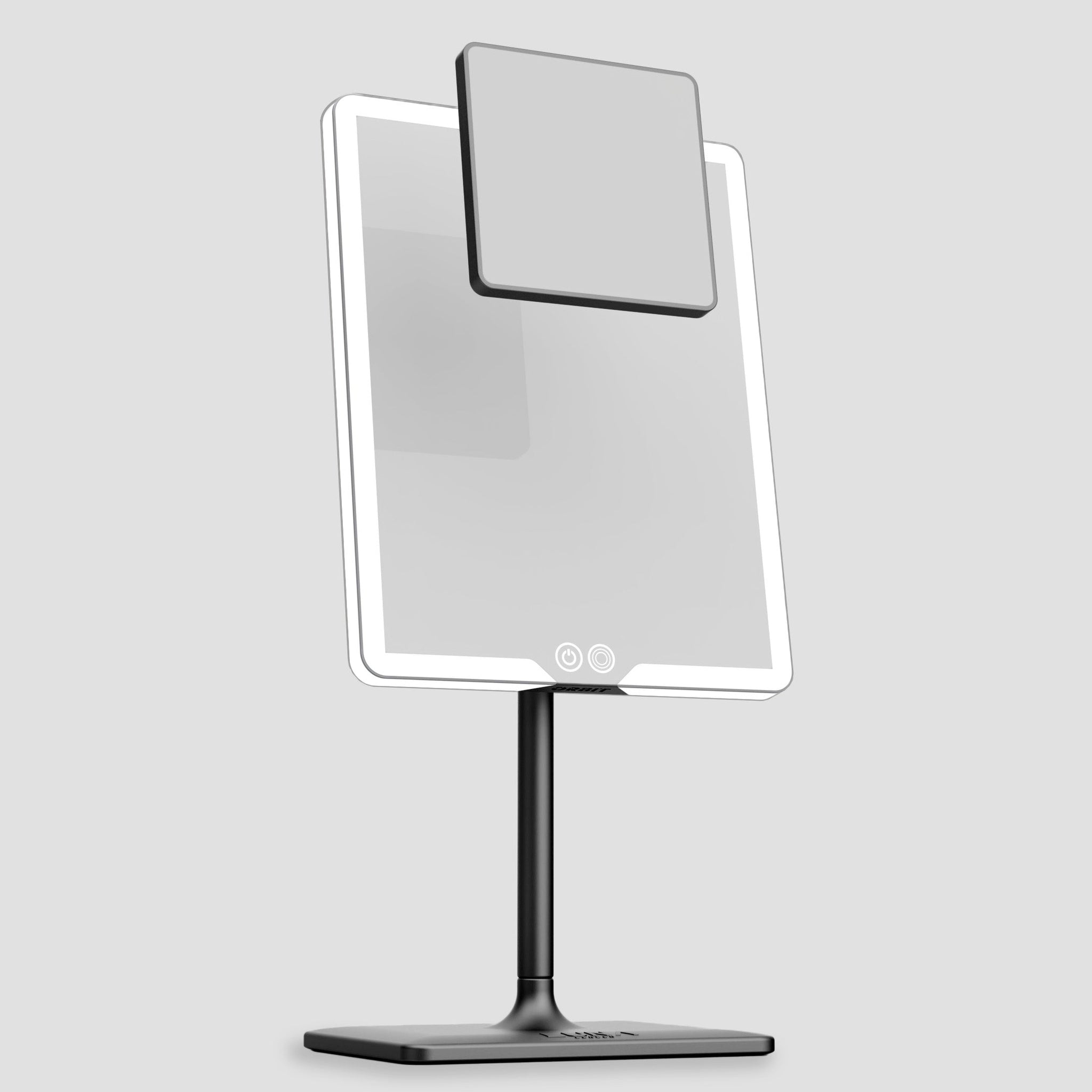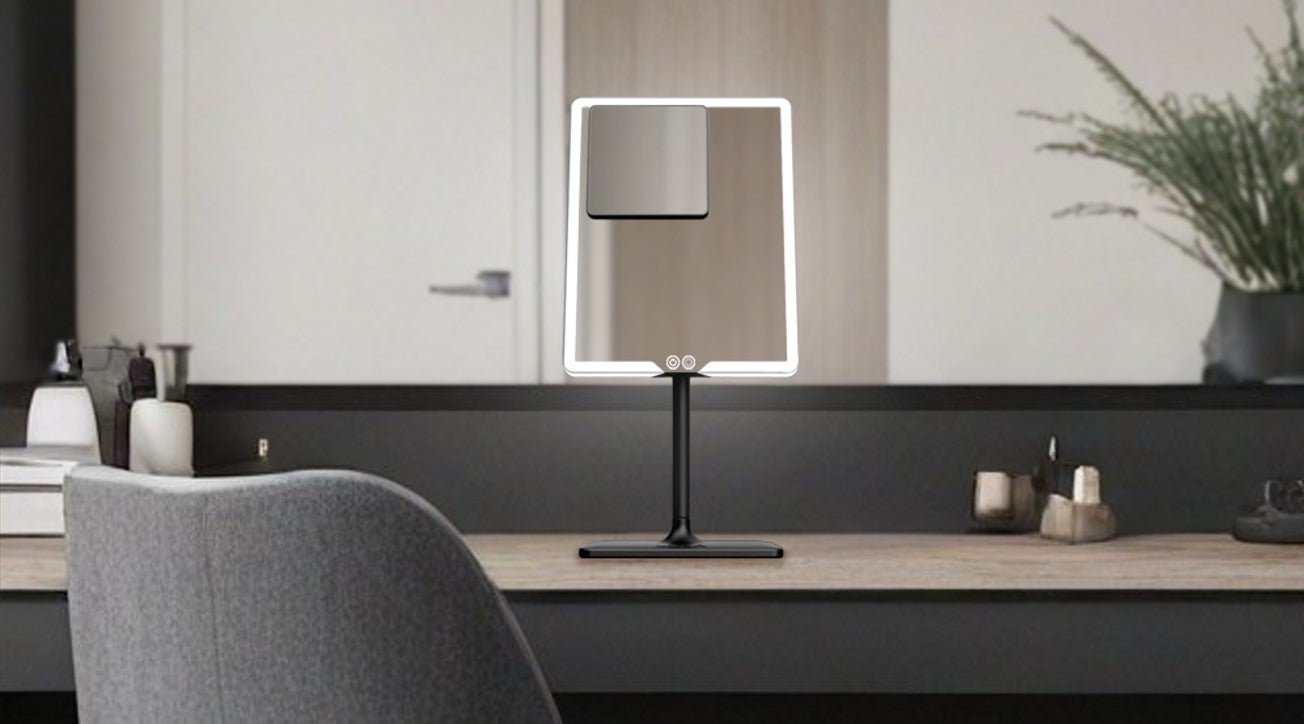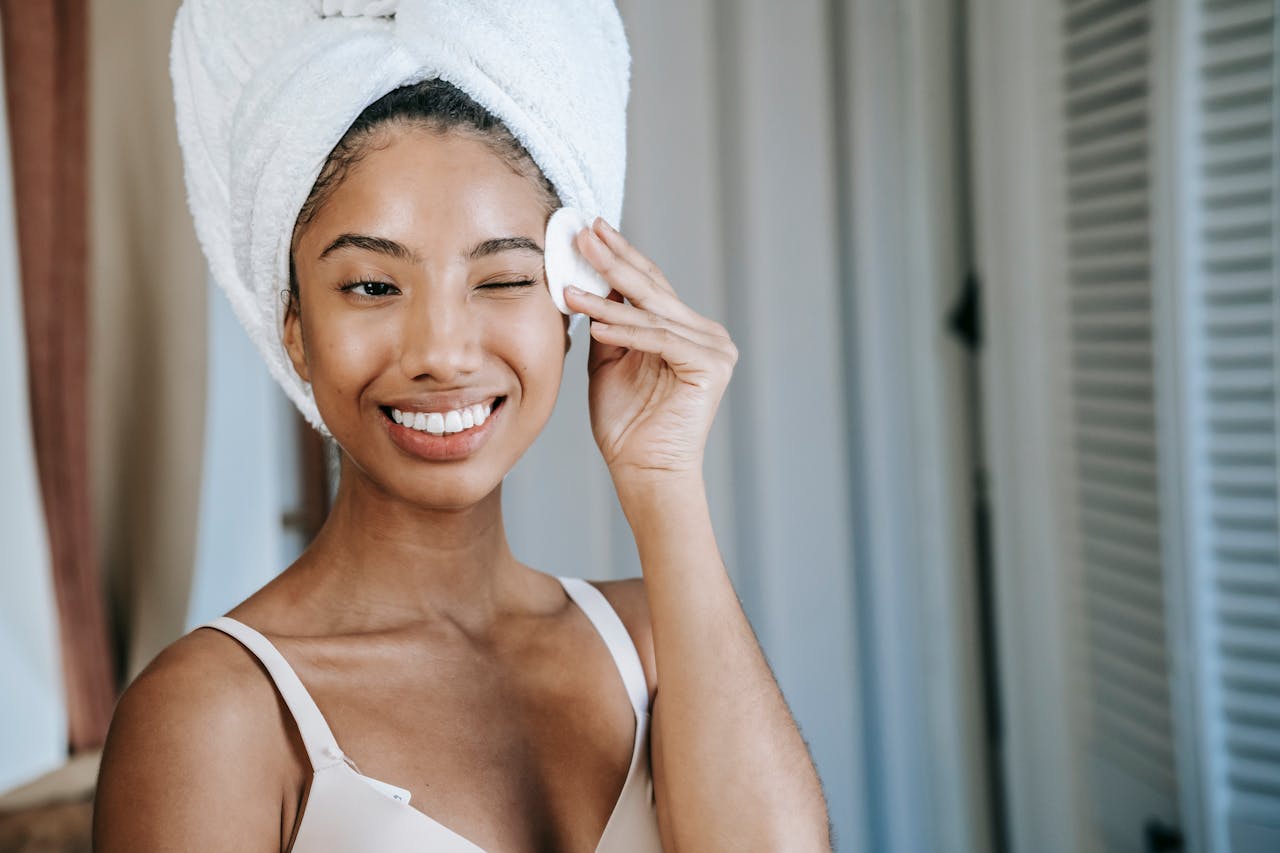Cosmetic Light Mirrors in 2025: Features That Actually Matter (And Our Favourites)
If your foundation looks perfect indoors but off outside, blame lighting. The right cosmetic light mirror reveals undertones, textures and edges clearly so you can blend once, not twice.
The 2025 buyer’s guide to colour-true, shadow-free mirrors
The Four Specs That Change Your Makeup
- CRI 90+: Truer reds, neutrals and complexion tones (CRI basics).
- Face-framing evenness: Side shadows distort contour/liner symmetry.
- Adjustable CCT: Daylight for prep; warm for indoor checks.
- Stable dimming + memory: Same brightness every day = consistent results.
Quick Comparison Table
| Use Case | Good | Better | Here’s Our Favourite |
|---|---|---|---|
| Dressing Table, daily makeup | Generic lighted mirror | LED cosmetic mirror, CRI ~90 | ORBIT — high-CRI, adjustable warmth, refined finishes |
| Compact desk / small rooms | Small desktop mirror | LED desk mirror with dimming | ECLIPSE — slim footprint, accurate light |
| Travel / hotel bathrooms | Pocket mirror | Compact LED mirror | COMPACT 2.0 — reliable, bright on-the-go |
Desk vs Dressing Table vs Travel
Dressing table: Aim for a stable, face-framing mirror with adjustable warmth and memory presets (e.g., ORBIT). Desk: Save surface area with a slim option (ECLIPSE). Travel: Hotel light is unpredictable; COMPACT 2.0 restores consistency.
What size, magnification and controls should you pick?
After specs, fit matters. For base and blush, standard 1× is best because magnification can trick you into over-correcting. Use 5×–10× only for detail (liner, tweezing) and always step back to 1× for a final symmetry check. Controls should be simple: tap to switch colour temperature, hold to dim, and memory to save your favourite setting.
| Decision | Best for | Tip |
|---|---|---|
| Mirror size | Face + shoulders visible | You should see both eyes without moving your head. |
| Magnification | Detail work only (5×–10×) | Do a final pass at 1× to avoid patchy base. |
| Controls | Tap CCT; hold to dim; memory | Save “daylight 75%” as your default for weekdays. |
| Power | USB-C / rechargeable | Travel-ready and neater on desks. |
How to test your lighting at home (2-minute check)
- Set your mirror to daylight, about 70–80% brightness.
- Apply base and blush; step back to 1× view.
- Toggle to warm and check edges (jaw, hairline, nostrils) — blend if you see lines.
- Take a quick photo near a window; undertones should match the mirror view.
“On a makeup-free face, pick three shades… Check the colors in natural light; the color that blends in with your skin is the right one.”
— Bobbi Brown, makeup artist & founder, in W Magazine.
Mistakes to avoid
- Brighter is not always better: glare hides texture and makes you over-apply.
- Magnification for everything: it’s for detail, not base. Finish at 1×.
- One-tone setups: use daylight for prep, warm for indoor checks.
- Relying on overheads: they cast shadows; use front-facing, even light.
Want more real-world setup ideas? See our guides on light-up mirrors for makeup and vanity mirror sizes, lights and features, plus a practical read on day vs night lighting checks.

Let Your Colours Read True
High-CRI LEDs, adjustable warmth and even, face-framing glow — ORBIT is our reliable all-rounder for colour-accurate makeup in 2025.
Explore ORBIT finishes →FAQs
Is CRI more important than brightness?
Both matter. CRI affects colour fidelity; brightness affects visibility. Choose high CRI first, then tune brightness for comfort.
What colour temperature should I use?
Use daylight for prep; switch warmer for indoor checks. Adjustable CCT gives you both in one mirror.
Do travel mirrors actually help?
Yes — they standardise light in hotels so your routine looks consistent everywhere. COMPACT 2.0 is designed for this exact use case.
Related Links



Leave a comment
This site is protected by hCaptcha and the hCaptcha Privacy Policy and Terms of Service apply.